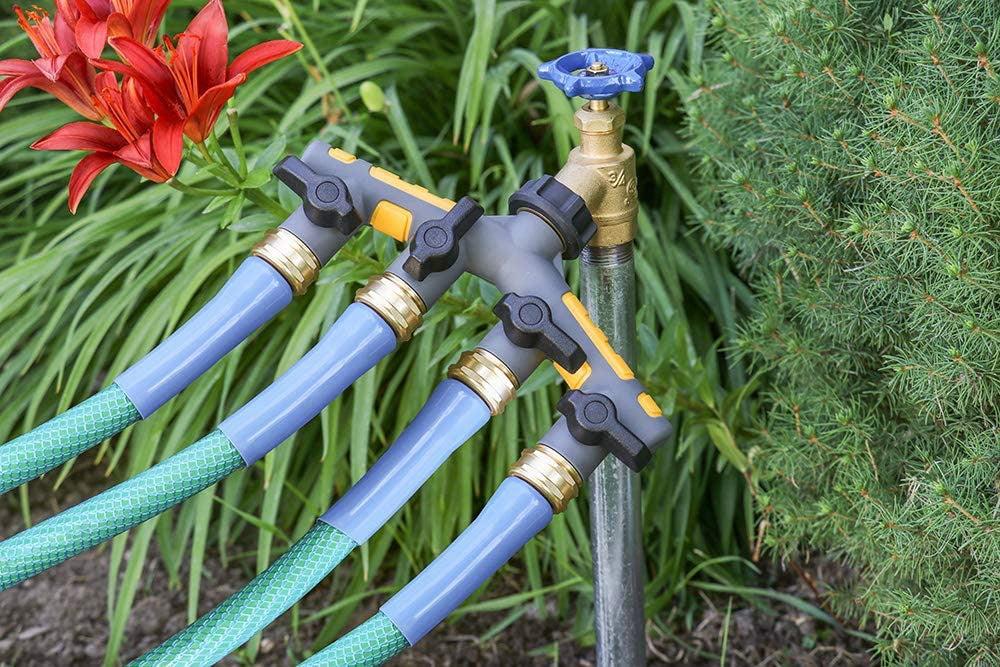What to look at while selecting the best garden hose splitter?

Garden hoses can be used for a variety of purposes. A consistent water supply is necessary for numerous domestic duties, including irrigation, cleaning the driveway or porch, watering plants, and car washing.
However, completing multiple tasks at once might be challenging when a home has one spigot for hoses. This issue is resolved by garden hose splitters, which divide the water from a single tap into two or even more water channels.
The best garden hose splitters must be determined by considering several different aspects. Characteristics, including size, material, and channel count, determine the efficiency of a multi-hose arrangement. Continue reading to learn more about choosing the best hose splitter for the garden.
Size
Garden hoses frequently appear to be the same size at first glance, but they feature various-sized fittings. A garden hose splitter's suitable fitting size must match the garden hose's threads in order to fit securely and avoid leaks.
Most fittings have an external size that is typically 11/16 inches wide. However, the inner diameter may change based on the hose's circumference and thickness.
It's simple to determine the ideal size: Measure the hose opening's diameter using a tape measure. There are connectors in 38, 12, and 34-inch diameters. That number indicates the size of the connector needed for that hose. Usually, the connector size matches the hose's circumference.
Material
Metal and plastic are the two most common materials used to make splitters. Plastic splitters are lightweight, strong, and reliable. Metal components are typically used in well-built plastic splitters to help them more successfully withstand corrosion caused by prolonged contact with water.
Hence, plastic is preferable if you frequently plan to switch the splitter between taps because the threads won't seize because it doesn't rust.
Plastic splitters are solid and resilient, but they don't offer the same durability and strength as metal splitters, and they could melt or distort in hot environments. Because they contain little iron, red metals like copper, bronze, and brass are the best.
Number of Channels
The number of water channels provided by a hose splitter is unrestricted to two. A hose splitter, by definition, divides one stream of water into two. However, there are other alternatives. Three-channel splitters are standard because of their enhanced functionality, and four-channel splitters are also available.
Multichannel splitters cause a problem with the water pressure. Dual splitters often function well under high and low pressure, but adding a third channel can produce three streams of water that need to be more vital to be of any value.
Cost
Before setting a budget, check the average cost of garden hose splitters. Fortunately, they are inexpensive, making a nice one affordable for many individuals.
However, a garden hose splitter's price correlates directly with its quality, so you should budget more for solid brands that will last you a long time.
If you have a limited budget, you should also look for a low-end model that will satisfy your needs. Refrain from assuming that they will last as long as high-end ones.
- Industry
- Art
- Causes
- Crafts
- Dance
- Drinks
- Film
- Fitness
- Food
- Games
- Gardening
- Health
- Home
- Literature
- Music
- Networking
- Other
- Party
- Religion
- Shopping
- Sports
- Theater
- Wellness
- News


